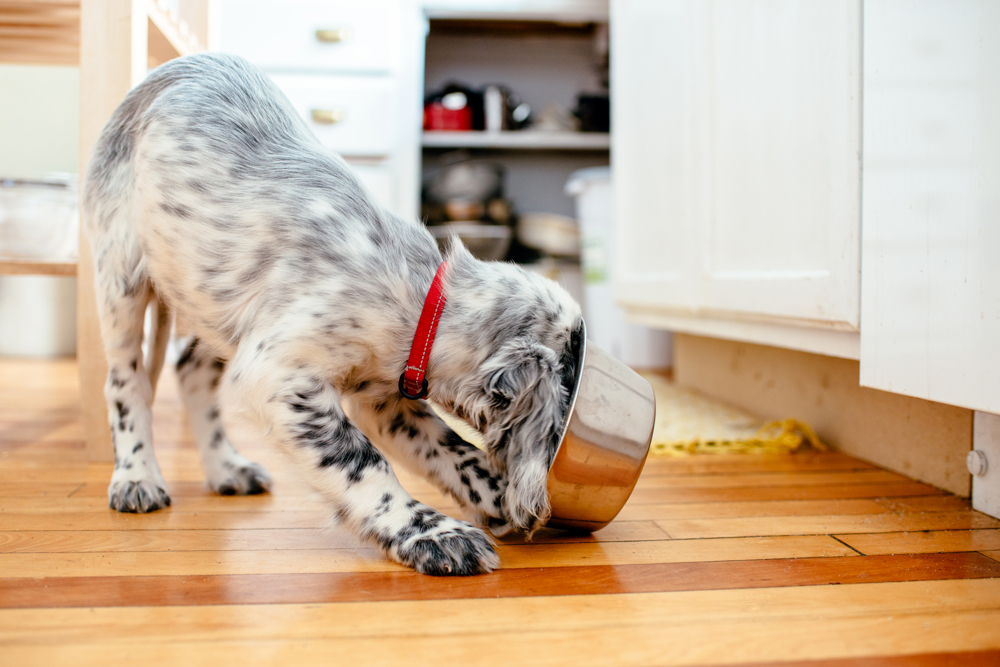
The power of protein and keeping muscles strong
Muscle power depends on protein. Not surprisingly, canine athletes such as those doing agility, that do not receive adequate dietary protein may suffer from fatigue and have a lackluster attitude and performance. Nutritionists recommend feeding active dogs a diet made with highly digestible, quality protein sources.
Why active dogs need more protein
Active dogs require more protein than sedentary ones. This is because active muscles undergo a natural process of building and breaking down muscle protein called protein turnover. During and after exercise, protein turnover increases to meet the increasing metabolic needs of working dogs¹. Elevated dietary protein complements the benefits of fat metabolism, since amino acids, the building blocks of protein, promote muscle growth and recovery. Key protein building blocks, branched-chain amino acids, also become an important energy source in exercising muscles².
How much protein is needed for active dogs?
Though dietary protein is important for dogs’ overall health and well-being, it is particularly important for active dogs that require more protein to meet their energy needs and fuel their muscles. To help support active dogs, it is recommended to feed food with a guaranteed level of protein at 26% or higher. Dogs that receive dietary protein at these optimal levels are more likely to perform at their full capacity.
The importance of feeding after exercise
Exercise is a natural stress that challenges the immune system and accelerates the body’s protein metabolism and muscle breakdown. Not eating the right sorts of foods and/or not having enough time to recover from exercise can impair a dog’s immune system. Muscle breakdown continues after exercise until a dog is fed, which is why it is important to rehydrate and feed after exercise, as it aids in fuelling a dog’s recovering body. The nutrients in the food provide the building blocks to allow the muscles to switch from breakdown to rebuilding.
The role of fat in nutrition for high energy dogs
Did you know, unlike humans, your dog’s main energy source comes from fat, not carbohydrates, during rest and most types of exercise? Working and sporting dogs benefit from higher proportions of fat in their diet. Why? Because, a dog’s metabolism relies primarily on fat for energy during rest and light to moderate intensity exercise.
Having higher levels of fat in the diet actually “primes” or “metabolically conditions” an active dog’s metabolism, even when not active or exercising. So while a greater proportion of fat in the diet helps to deliver more calories to an exercising dog, another important benefit is that it helps to optimise a dog’s metabolism.
Fat as an energy rich food source
Maximum efficiency comes from a diet containing highly digestible fat. A diet that skimps on fat will contribute to a reduction in endurance and overall fitness. Fat is more energy dense compared to carbohydrates and protein, and when the dietary fat concentration is increased in a food, the food’s energy density gets a boost. An energy dense food is important when more calories are needed, thus less food to be eaten to provide the greater energy required to maintain a stable body weight and an active lifestyle.
The importance of feeding before exercise
Fat metabolism is the optimal energy-generating process for exercising dogs. The body is in a more optimal state of fat burning when fed 18 to 24 hours before exercise compared to only 4-6 hours before exercise. This is why dogs should be fed a full meal a minimum of 10 to 12 hours before exercise and up to 20 to 24 hours.
Fat helps maintain health skin and coat
A visible effect in dogs that receive a diet lacking adequate fat is a dull, scruffy coat and flaky skin. Fat contains the omgea-6 fatty acid: linoleic acid, which is important in the fat portion of skin cells, called epidermal cells. A proper balance of linoleic acid in skin cell membranes helps maintain the epidermal water barrier, which promotes healthy skin and coat.
Other benefits of fat
Fat has many other benefits as well. It slows down the rate of stomach emptying, giving dogs a feeling of fullness after meals. Fat is important for the absorption and digestion of fat-soluble vitamins – A, D, E and K – that depend on dietary fat and normal fat absorption for their uptake and utilization in the body. Fatty acids help regulate the inflammation process via a proper immune response.
Fat deposits under the skin, around the vital organs and in membranes surrounding the intestines provide energy when needed and storage when there is a surplus. Fat under the skin provides insulation from temperature extremes and fat surrounding organs cushions and protects from physical shock. Lastly, fat is highly palatable and contributes to the texture of dog food.
Getting the right balance for your dog
Active dogs need fat to fuel their muscles and make the energy they require for movement. Dogs fed a high-fat food have more capacity to burn fatty acids and a greater capacity to perform at a high level. It is important that you feed the right diet for your dog throughout their life, as nutritional requirements can be different for many reasons, such as age, activity levels and breed specific needs, so please ensure you check with your vet on your dog’s nutritional requirements in regards to their age, breed and activity level.
¹ Blomstrand E, Eliasson J, Karlsson H, Kohnke R. Branched-Chain Amino Acids Activate Key Enzymes in Protein Synthesis after Physical Exercise. Journal of Nutrition. 2006;136:269S-273S.
² Henriksson J, et al. Effect of Exercise on Amino Acid Concentrations in Skeletal Muscle and Plasma. Journal of Experimental Biology. 1991:160:149-165.
